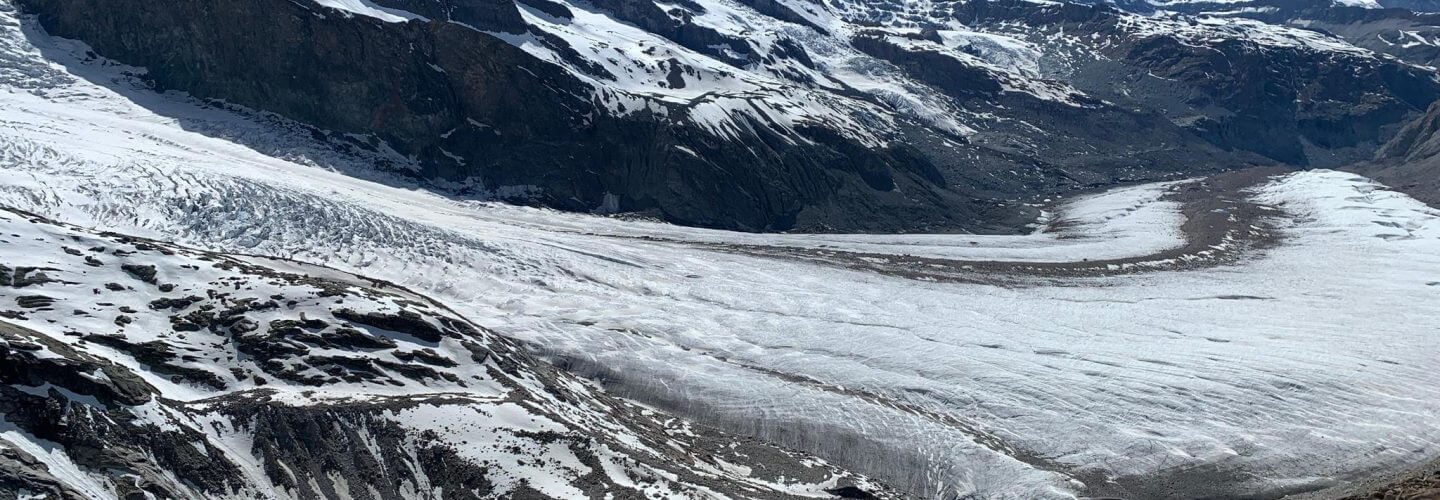Because of the melting of the glaciers, sections of the border between Switzerland and Italy are in a state of flux.
Although the areas affected are at high altitude, this has led to an interesting dispute between the two countries.
For the most part, the exact location of Alpine national frontiers is dictated by the boundaries between adjacent watersheds that follow the mountain ridges that separate two countries.
When these are entirely made up of rock, they tend to be pretty stable. However, those crossing glaciated terrain are subject to the natural movement of the ice which, in this era of climate change, has been accelerated.
Nowhere is this more in evidence than on the Theodul glacier at Testa Grigia above the Swiss mountain resort of Zermatt.
At its highest point this forms the border with the Italian resort of Cervinia at about 3500m above sea level.
However, over the last 80 years the height of the glacier on the Swiss side has dropped dramatically, moving the border further into Italy and increasing the area falling within Swiss territory.
Under normal circumstances, such an occurrence at high altitude would attract scant attention in the grand scheme of things but in this particular case it has had the effect of moving a large part of the Italian ‘Rifugio Guide del Cervinio’ mountain refuge into Switzerland.
Built in 1984, the refuge has a restaurant which is popular with skiers from both Zermatt and Cervinia, and also provides convenient overnight accommodation for mountaineers on their way to climb the Breithorn with its multiple peaks above 4000m.
Not surprisingly, the Italians are keen to reclaim their lost territory, despite a 2008 treaty that reaffirmed the criteria for establishing the location of the border.
However, it seems the Swiss authorities are not against making a concession in return for land in Italy, possibly at the nearby ‘Gobba de Rolin’, which although Italian sovereign territory, is within the Zermatt summer ski area.
The whole issue is being handled by a joint commission and it is hoped that agreement will be reached before the end of 2020.
In the meantime, a programme of much-needed renovations at the refuge remain suspended, due to a lack of bureaucracy – as a final decision on which country’s authority should issue the relevant permit for the work is required.
Article by Ed Mannix, owner of Matterhorn Chalets



